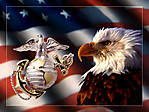 |
Weathering Ordnance |
It
sounds strange, but how many of us here would think that the armament we
hang from on our models would need to be weathered along with the Aircraft?
What I mean is, we strive to show wear and tear on the aircraft we build-or
on any model for that matter. We use the many techniques mentioned
on Armorama such as Pre-Shading, Shading, Dry-Brushing, Stippling, or whatever your
favorite weathering technique is. The thing that I notice is, and I am guilty
of this as well, is that the ordnance hanging from the plane looks clean and
pristine. So why not weather it along with the rest of
the plane? We love to show the abuse that these planes take while they were
in flight but most of us never think that the ordnance hanging from the wings
is subject to the same abuse that the aircraft takes-if not more. Yes
more abuse believe it or not and hopefully I will be able to explain this to
where is it makes sense.
As I do not build armor models that often, I will stick to the three most
common aircraft ordnance types that you will find in most of the kits you will build
but hopefully some of this can carry over to other models and weapons
systems as well.
As most of you know, aircraft models are broken down into what I like to
call five separate little models:
1) The cockpit. It can show wear and tear on the seats, floor pans, control
stick, foot pedals and so on. The possibilities are endless.
2) The Fuselage. It can show chips in paint around access panels, wear and tear of
the step ups, and just general dirt overall in the panel lines and such.
3) The Wings. They can show fuel spills, wear and tear of the wing walks, fluid and
fuel leaks and chips on the leading edges.
4) The Landing Gear. They can show hydraulic fluid leaks, general maintenance dirt
and tread wear on tires.
5) The Ordnance. What can we show here? Let's see:
A) Bombs. Generally are stored either outside or in a
magazine. Fact is they get dirty, rusty, and chipped by tools during build
up and breakdown, loading, hoisting, unloading.
B) Missiles. Although stored in air tight “coffins” they will get
scratched, chipped, and subjected to the same harsh environment the aircraft
is during flight. Leading edges of fins can get silvered from paint or
finish being worn away (just like the wings on the plane). During assembly
and disassembly paint on the motors will get scratched and chipped. Really
only the seeker heads are treated with kit gloves for obvious
reasons. They are cleaned off after every flight, covered up for transport
and place back in the containers. The motors are just hoisted and placed
back in the coffins or covered with a tarp, left on the cradle and placed back
on the Aircraft for the next flight.
C) Rocket Pods. These are the some of the dirtiest, if not the
dirties, of all “dangly things” there is. Whether it is a 5 inch launcher or
a 2.75 inch launcher, the motors of these rockets put a beating on their
pods. The front 1/3 of these things can be burnt, sooty, rusty, and in
general just plain nasty for lack of a better term. The only thing that
actually gets cleaned on these things are the inside of the tubes and firing
contacts. The rest is left as is.
I hope that this has given you some ideas on some future projects that you may have
planned. So if you like to “dirty up” your aircraft like I do to show usage
don’t be afraid to include your weapons load on them. I was
lucky enough to spend 8 years working with this stuff and I can tell you
this, I never went home as clean as I did when I showed up in the morning. Go
ahead and experiment. There is no right way or wrong way to do it. Have fun
with it. The results may surprise you. |
|















